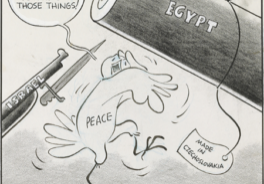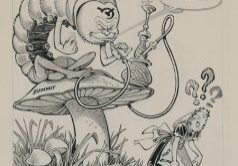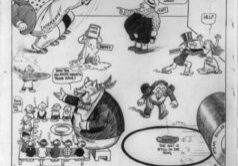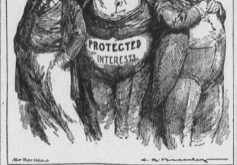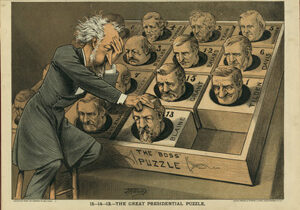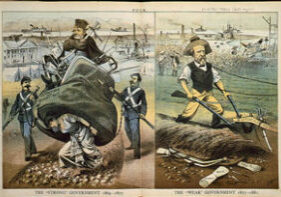Lesson Plans
Prospects for Peace in the Middle East
Students analyze a set of political cartoons to deepen understanding of the conflict in the Middle East during the 1950s and 1960s and efforts made towards building peace. After, students conduct research to identify a major issue that is currently affecting efforts at brokering peace in the Middle East and create their own political cartoon illustrating the issue.
What Are the Props Behind Propaganda?
Students learn about the "props" or techniques political cartoonists to present a view on an issue ("propaganda"). Next, they analyze a series of Cold War political cartoons to investigate issues and perspectives related to the Cold War. After, students create their own political cartoon on a contemporary issue.
Everybody’s Doing It!
Students consider point of view and creator purpose as they analyze an historical political cartoon, then create a political cartoon that relates to federal, state or local government today that keeps the title, “Everybody’s Doing It!”
Identifying Bias in Presidential Election Newspaper Coverage
Students analyze historical primary sources to identify bias and investigate the role newspapers played in shaping public attitude toward the 1912 presidential candidates. Next, students team up to find newspaper coverage (print or digital) of a contemporary presidential election, analyze the sources for bias, and then compare and contrast their historical and contemporary findings. Finally, students communicate their newfound understandings of presidential election newspaper coverage bias through a short written essay, a digital timeline, or a print or digital poster.
Party Factions
Students investigate the effect of party factions on the 1880 U.S. presidential election, then compare and contrast that to the 2016 U.S. presidential election and consider applicable parallels to the present.
Perspectives: Strong-Weak Government
Students explore historical and contemporary issues presented in political cartoons and consider why it is important to consider different perspectives when investigating issues.

